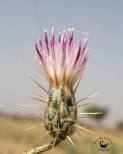| PlantID | 0114 | ||||||||||||||||||
| Botanical Name | Oligochaeta ramosa | ||||||||||||||||||
| Common Name | Bada vard | ||||||||||||||||||
| Classification |
| ||||||||||||||||||
| Part used | Whole plant | ||||||||||||||||||
| Medicinal Properties | Whole plant: tonic, laxative, aperients, deobstruent and febrifuge. | ||||||||||||||||||
| Medicinal Use | Whole plant: Cures old fever and general debility, derives snakes away. | ||||||||||||||||||
| Chemistry | Aerial parts: glucoside-procumbenin, jaceosidin and cynaropicrin. | ||||||||||||||||||
| Cultivation | NA | ||||||||||||||||||
| Regional Habitat | Commonly found in dry, waste-places and in cultivated fields. Distribution: Ganganagar, Jhunjhunu, Sikar, Jaisalmer, Bramer, Jodhpur, Bikaner, Alwar, Pali, Udaipur, Dungarpur, Jaipur, Bharatpur and Kota districts of Rajasthan. | ||||||||||||||||||
| Description | Decumbent or sub-erect, 18-40 cm high herbs, woody at base. Stem: angular, striate, scaberulous. Leaves: sessile, cuneate/attenuate at base, elliptic-oblong or oblanceolate, 0.4-0.8 x 0.2-1.8 cm, surfaces pubescent dotted white adaxially, scabrid abaxially, margins spinous-ttothed or sinuately pinnatifid, lobes mucronate, entire, often crisped. Flowers: capitula 1.0-2.0 cm across, solitary, terminal; stalk 0.2-1.6 cm long, sulcate, scabrid, bracts 1-2, small, foliaceous; Invol. bracts spinescent spines 1.0 cm long, those in the outer series ovate 0.5 cm long, reflexed, white; of inner ones linear-lanceolate, 0.8-1.4 cm long, margins scarious, ciliate, mid vein terminated into erect or spreading spine, pale-yellow; palea equal and shorter than the cypsels; corolla purplish, campanulate, lobes 0.2 cm long, linear, acute; anthers exserted; style 1.2 cm long, slender, with a hairy-ring at base of stigmatic branches, linear-subulate, recurved. Fruits: cypsels blackish-brown, obconic, 01. cm long, ribbed, punctuate between ribs, apex truncate. Flowers and fruits appears almost throughout the year. | ||||||||||||||||||
| Image |  |
Oligochaeta ramosa

